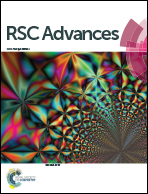Carbon nanofiber-templated mesoporous TiO2 nanotubes as a high-capacity anode material for lithium-ion batteries†
Abstract
The present communication demonstrates the synthesis of uniform mesoporous TiO2 nanotubes via hydrolysis and condensation of tetrabutyl titanate (TBOT) using carbon nanofibers as templates followed by calcination under air. We further demonstrate the use of such TiO2 nanotubes as an anode material for rechargeable lithium-ion batteries (LIBs) with high discharge capacity, good rate capability and excellent cycling performance. They deliver a high discharge capacity of 209.6 mA h g−1 at a current density of 0.2 C in the voltage range 1.0–3.0 V. They can still deliver a discharge capacity of 108.1 and 88.8 mA h g−1 with 100 and 93.2% capacity retention after 500 charge–discharge cycles under current densities of 2 and 4 C, respectively.


 Please wait while we load your content...
Please wait while we load your content...